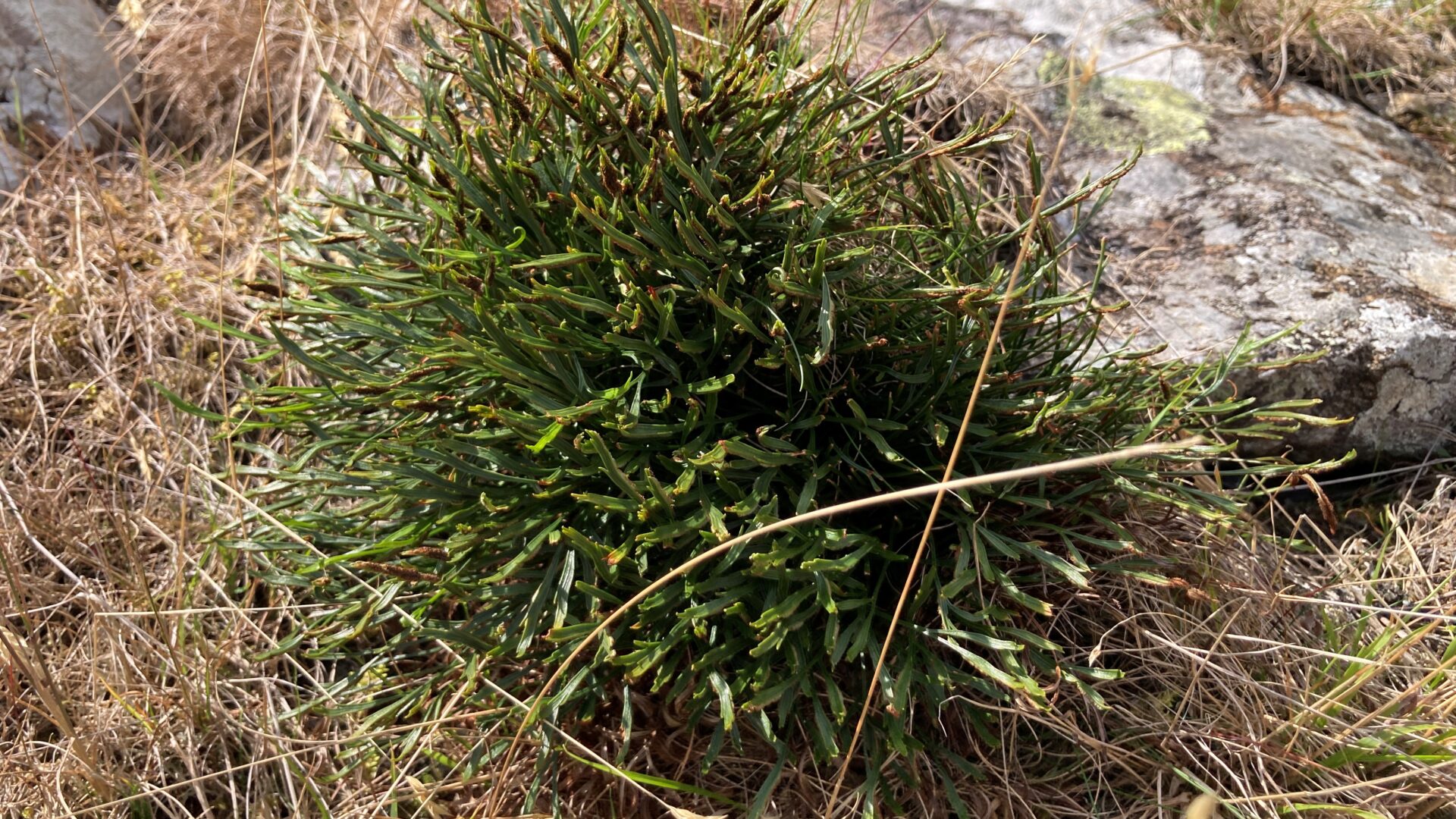
LookWild: How a rare plant was brought back from the brink on Dartmoor
-
Date posted: 27/02/2025
-
Time to read: 3 mins
The forked spleenwort is incredibly rare in the south of England. Dominic Price reports on the innovative work being done in Dartmoor national park to return this plant to the wild.
At first glance the forked spleenwort look more like sprigs of grass than what you might expect from a fern, bursting out of cracks of rocks and walls. Closer inspection reveals their more distinct characteristics: the forked ends of the leaves resemble tiny adder’s tongues, and their under-leaves are packed with lines of spore-bearing grooves.
At The Species Recovery Trust we have been keeping a close eye on this species and its decline in the south of England for over a decade, watching it dwindle to just two sites: a brick wall in Kent, and a remote crag in Dartmoor, where it was failing to increase to a stable number.
It was only when we started surveying the more northerly sites that we realised this is in fact a species that can thrive in the right conditions. Climate change has possibly played a part in its demise, although as a species which favours sun-parched dry rocks, in many ways it seemed it could benefit from the hotter weather that has come our way.
An ambitious plan
A chance encounter of a loose plant – dislodged from a scree slope in the Lake District and looking half-dead – led to an ambitious plan to regenerate a captive population, which was done with considerable success by scientists at the Royal Botanic Gardens in Edinburgh.

After two years, when these plants started to become viable, the search was on for a suitable site to release them into on Dartmoor with the intention of trialling whether such an introduction could work. The hope was to restore the plant’s status on Dartmoor from ‘dwindling’ to ‘stable’.
Partnering up with Dartmoor National Park Authority ecologists and staff from Devon Wildlife Trust, we scoured Dartmoor for a range of locations – some closely matching the native site, but others with radically different characters. One thing we have learnt from years of endangered species conservation is that sometimes failing native sites don’t reliably inform you of where the species would really like to be if it had the choice!
Back from the brink
At the end of 2024 a large team of staff and volunteers from multiple conservation bodies and media outlets headed off to three secret locations on Dartmoor, to release the plants into their new homes. A range of techniques were used, placing plants into existing fissures in the rock, mixing spores with appropriately blended soil and grit and a technique called ‘hydrosporing’ where spores and mineral water are blended to a unusual milky solution, which is then sprayed directly onto the rock.
After much time recording the exact locations of the plants all we could do was bid them farewell and leave them to the harshness of a Dartmoor winter.

Early monitoring is showing some plants looking extremely healthy with others withering away – whether these will regenerate in the spring when they have had time to root deeper into the fissure remains to be seen. But it’s a huge step forward to saving this rather quirky fern, and every success and failure will be closely logged over the next decade to better inform future efforts to save the species.
In the meantime if you see something of Dartmoor that doesn’t quite look like any plant you’ve seen before, then do say hello to the humble forked spleenwort – the plant that we nearly lost.
Dominic Price is the chief executive of the Species Recovery Trust.
Main image: Haytor Rocks on Dartmoor. Photo: Dan Cook